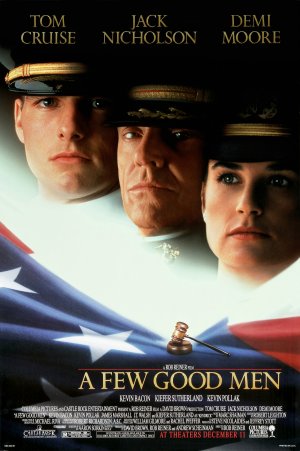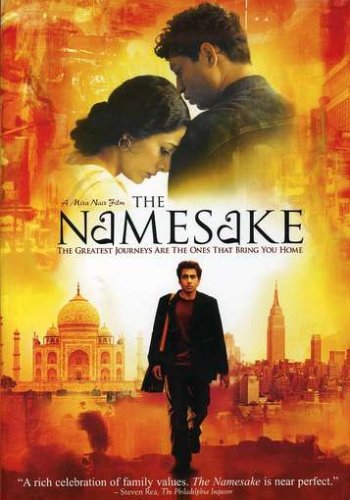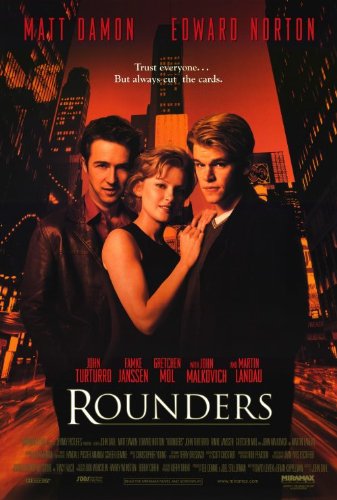
‘Slumdog Millionaire’ answers
worth more than 20 mil. rupees
If anyone ever put together a book about how to win at shows like “Jeopardy!” or “Who Wants to Be a Millionaire,” undoubtedly there would be a chapter or two hailing the dilettante. The questions always deal with a range of topics a mile wide and an inch deep. You need to know, for example, only that about five players — Babe Ruth, Lou Gehrig, Mickey Mantle, Joe DiMaggio and Yogi Berra — were famous New York Yankees and you definitely do not need to know that Mike Pagliarulo played third base in the Bronx for a few years in the 1980s. Know a little something about everything, and you’re on the right track.
Jamal Malik, an orphaned Muslim boy in Bombay, is wiser than he should be as he reaches adulthood. His knowledge is neither deep nor wide. But because of his traumatic life story, we give him the benefit of the doubt that someone of his background might be capable of winning the grand prize in a TV quiz show.
Character motivation in “Slumdog Millionaire” is not conventional and not always believable. But the screenplay involving a version of “Who Wants to Be a Millionaire,” based on the novel Q and A, by Vikas Swarup, is an interesting way to metaphorize a life story. In the beginning, the questions are easy, the answers obvious from child-level rote memorization. Progressing, the questions get tougher, the decisions more stressful, the stakes higher. We gradually see why Jamal could lose everything, and why he maybe stands to lose nothing.
Jamal struggles with one of the early simple questions because he has had very little, if any, formal schooling. The questions that relate to money, chicanery, intimidation are the ones he best responds to, and with each answer we’re shown another episode of his troubled life — an episode we can always believe, because, neatly, there’s no way he could otherwise advance on the show.
With the exception of one semi-prominent actor, “Slumdog” does not have a connection to a couple other popular recent films in the United States that emphasized India, “The Namesake” (starring Kal Penn) and “Bride and Prejudice,” featuring Aishwarya Rai. Yet they have something in common. All make you feel the congestion, the poverty and the trains that seem to define India cinematically much more than the Taj Mahal.
What is the American perception of India, and is there but one perception? People in virtually every American community know of physicians and scientists of great intellect, with hard-to-pronounce names, who hail originally from the greater Indian subcontinent. Everyone who has ever dialed customer service on a phone is aware that Indians do this kind of work and that the ones who do are obviously bilingual.
But anyone who has picked up a National Geographic, or a host of other magazines or news articles, knows that India and its neighbors breed immense poverty, due to massive population density, destructive weather patterns and in some cases, unspeakably unsanitary conditions.
“Slumdog” presents a changing India through the relatively short lifespan of its characters, one of whom remarks that “Bombay became Mumbai,” and gradually new high-rises emerge where appalling slums once covered mile after mile of terrain. (Luckily in this case, movie theaters only convey sight and sound, not smell.) The film might lack a sense of despair that would be expected of people in these characters’ situations, though it tries. At one point, a character declares “I love you,” only to be greeted with, “So what?” But it is not a particularly convincing scene and a weak moment in the film.
Several times there is the suggestion of a rags-to-riches story, but “Slumdog” is far more concerned with the rags. The professional, affluent version of Mumbai virtually never appears, except through a brief glimpse of a gangster, a professional in thuggery only. The police — when present at all — are not civilized authority figures, but gangsters in their own right, presumably paid public servants carrying out the will of whoever’s running the town. Horrifying things regularly happen to children and women, and the only way to punish the bad guys is to do it yourself.
It takes time, but eventually Jamal’s motivation for appearing on the quiz show surfaces. He is neither a genius nor greedy; why would he not take the money at a certain level and run? A cynic would say it’s because we’d never hear the end of the story. But through carefully constructed events, screenwriter Simon Beaufoy has crafted a finish that is at least plausible, if occasionally predictable.
If one judges there to be a significant flaw in this film, it would be in the love story. Something about it just does not feel quite whole. It is like someone or something that has been given enough chances, failed to succeed, and so is given more chances. It is best depicted in scenes involving children, whose feelings for each other are less mysterious.
“Slumdog” relies greatly, more than most films, on extended sequences of childhood flashbacks. It is difficult enough to portray the protagonist as a child with a child actor of similar appearance; it is probably more than twice as difficult to do it again, as a young teenager or pre-teen. The casting in “Slumdog” is marvelous because two young brothers not only resemble their older selves, but one is consistently depicted older and with a more distinctive haircut and thus they are never confused. The female star bears less resemblance to her childhood portrayers, but she is not to be confused with anyone, so not a problem.
A question is posed at the beginning of “Slumdog Millionaire.” Were this a film about an American, in America, the answer would probably be different. The Indian explanation for what happens is maybe a bit of a head-scratcher. It should not be a problem to set aside disbelief here. A character remarks that there are “90 million people” in Mumbai (or thereabouts), and his undertaking should be viewed as a 1 in 90 million opportunity that might have a 1 in 90 million outcome. You won’t need to use one of your lifelines to appreciate this heartfelt, whirlwind tour through the belly of Bombay.
3.5 stars
(November 2008)
“Slumdog Millionaire” (2008)
Starring Dev Patel as Jamal Malik ♦ Anil Kapoor as Prem Kumar ♦ Saurabh Shukla as Sergeant Srinivas ♦ Raj Zutshi as Director ♦ Jeneva Talwar as Vision Mixer ♦ Freida Pinto as Latika ♦ Irrfan Khan as Police Inspector ♦ Azharuddin Mohammed Ismail as Youngest Salim ♦ Ayush Mahesh Khedekar as Youngest Jamal ♦ Sunil Aggarwal as Mr Chi ♦ Jira Banjara as Airport Security Guard #1 ♦ Sheikh Wali as Airport Security Guard #2 ♦ Mahesh Manjrekar as Javed ♦ Sanchita Couhdary as Jamal’s Mother ♦ Himanshu Tyagi as Mr Nanda ♦ Sharib Hashmi as Prakash ♦ Virendra Chatterjee as Slum Man ♦ Feroz Abbas Khan as Amitabh Bachchan ♦ Virender Kumar Gharu as Man on Fire ♦ Devesh Rawal as Blue Boy ♦ Rubiana Ali as Youngest Latika ♦ Ankur Vikal as Maman ♦ Tiger as Punnoose ♦ Chirag Parmar as Young Arvind ♦ Nazneen Shaikh as Baby ♦ Farzana Ansari as Latika’s Friend ♦ Anupam Shyam as Old Villager ♦ Salim Chaus as Ticket Collector ♦ Singh Shera Family as Family in Train ♦ Harvinder Kaur as Family in Train ♦ Narendra Singh as Family in Train ♦ Tanay Hemant Chheda as Middle Jamal ♦ Ashutosh Lobo Gajiwala as Middle Salim ♦ Satya Mudgal as Taj Mahal Guide ♦ Janet de Vigne as Ada ♦ William Relton as Peter ♦ David Gilliam as Clark ♦ Mia Inderbitzin as Adele ♦ Kinder Singh as Driver ♦ Christine Matovich Singh as Opera Singer #1 ♦ Thomas Lehmkuhl as Opera Singer #2 ♦ Siddesh Patil as Older Arvind ♦ Najma Shaikh as Woman at Brothel ♦ Saeeda Shaikh as Woman at Brothel ♦ Alka Satpute as Woman at Brothel ♦ Tabassum Khan as Woman at Brothel ♦ Tanvi Ganesh Lonkar as Middle Latika ♦ Sitaram Panchal as Dance Teacher ♦ Nigel Caesar as Hotel Security Guard ♦ Ajit Pandey as Javed Goon ♦ Kedar Thapar as Javed Goon ♦ Amit Leonard as Javed Goon ♦ Rajesh Kumar as Javed Goon ♦ Sagar Ghopalkar as Javed Goon ♦ Pradeep Solanki as Javed Goon ♦ Hamid Sheikh as Javed Goon ♦ Dheeraj Waghela as Javed Goon ♦ Arfi Lamba as Bardi ♦ Taira Colah as Nasreen ♦ Varun Bagri as Call Center Trainee ♦ Ankur Tewari as Dave ♦ Anjum Sharma as Operator ♦ Madhur Mittal as Older Salim ♦ Sarfaraz Khan as Autorickshaw Driver ♦ Syed Hussain as Autorickshaw Driver ♦ Umar Khan as Autorickshaw Driver ♦ Imran Hasnee as Javed’s House Doorkeeper ♦ Udayan Baijal as Cricket Commentator ♦ Sandeep Kaul as Floor Manager ♦ Rhea Lawyer as TV Reporter ♦ Farrah Shaikh as Dancer at Javed’s Safehouse ♦ Tanya Singh as Newsreader ♦ Anand Tiwari as Newsreader ♦ Faezeh Jalali as Newsreader ♦ Rupali Mehra as Newsreader
Directed by: Danny Boyle
Co-directed by: Loveleen Tandan (India)
Written by: Simon Beaufoy
Written by: Vikas Swarup (novel)
Producer: Christian Colson
Co-producer: Paul Ritchie
Associate producer: Ivana Mackinnon
Line producer: Tabrez Noorani
Executive producer: Tessa Ross
Executive producer: Paul Smith
Co-executive producer: François Ivernel
Co-executive producer: Cameron McCracken
Original music: A.R. Rahman
Cinematography: Anthony Dod Mantle
Editing: Chris Dickens
Casting: Gail Stevens ♦ Loveleen Tandan
Production design: Mark Digby
Set decoration: Michelle Day
Costume design: Suttirat Anne Larlarb
Makeup and hair: Virginia Holmes ♦ Natasha Nischol
Post-production supervisor: Lucie Graves
Production manager, U.K.: Jennifer Wynne





